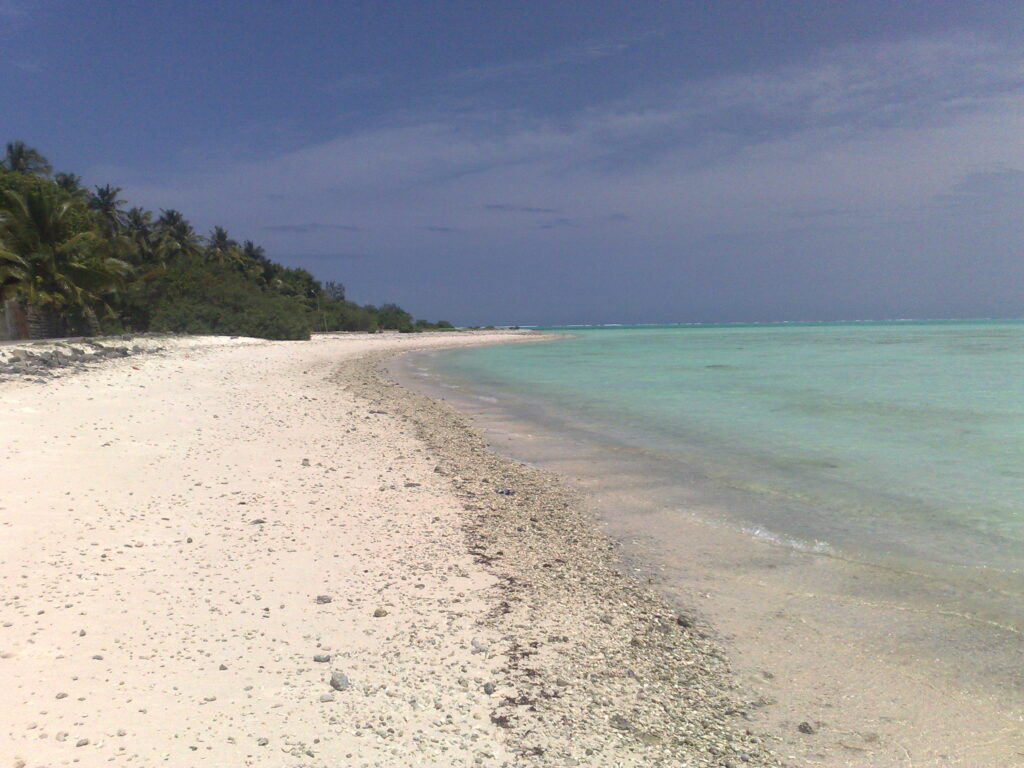
Lakshadweep is India’s smallest Union Territory, an archipelago of 36 islands scattered across the Arabian Sea, about 200–440 km off the southwestern coast of Kerala. Renowned for its pristine beaches, turquoise lagoons, coral reefs, and tranquil lifestyle, Lakshadweep is often called “India’s Maldives.
The main islands include Agatti, Bangaram, Kadmat, Minicoy, and Kavaratti, each offering unique experiences, from water sports and eco-tourism to cultural immersion. Lakshadweep is administratively divided into eight inhabited islands and numerous uninhabited ones, making it a paradise for adventure seekers, nature lovers, and peace travelers.
Geography
Lakshadweep is part of the Laccadive Island chain, characterized by:
Coral Atolls: Home to India’s largest coral reefs, forming natural lagoons and marine biodiversity hotspots.
Sandy Beaches & Coconut Groves: White sands lined with swaying palms dominate the landscape.
Tropical Climate: Warm and humid year-round, with monsoon rains from June to September.
Lagoon Ecosystems: Support fisheries, mangroves, and migratory birds.
The territory’s location in the Arabian Sea provides stunning sunrise and sunset views and opportunities for water-based activities like scuba diving, snorkeling, and kayaking.
History
The islands have been inhabited for over 2,000 years, primarily by Malayali-speaking communities with a maritime culture.
Ancient Trade: Lakshadweep was part of trade routes connecting India, Arabia, and East Africa, exporting coconuts, coir, and fish.
Portuguese & British Influence: Limited, mostly via maritime trade and navigation.
Integration into India: After independence, Lakshadweep became a Union Territory in 1956.
The islands’ history reflects a blend of indigenous seafaring traditions, Islamic influences, and South Indian cultural elements, making them culturally distinct yet serene.
Culture and Festivals
Lakshadweep’s culture is heavily influenced by Islam, combined with traditional Malayali maritime practices :
Festivals:
Eid-ul-Fitr & Eid-ul-Adha: Major celebrations marked by feasting, prayers, and community gatherings.
Ramadan: Observed with fasting and nightly community iftars.
Uroos Festival (Minicoy): Celebrates local saints with rituals and music.
Music & Dance: Folk songs, boat songs, and Laccadive dances performed during festivals.
Cuisine: Emphasizes seafood, coconuts, and aromatic spices.
Local crafts include coir mats, shell ornaments, and handwoven textiles , reflecting the islanders’ connection with nature and the sea.
Popular Dishes of Lakshadweep
Seafood Curry: Fresh tuna, mackerel, and prawns in coconut milk-based curries.
Fish Fry & Fish Cutlets: Local specialties using fresh catch.
Coconut-based Desserts: Snacks like coconut ladoos and puddings.
Kanava & Tuna Rice: Traditional islander meals combining rice, fish, and coconut.
Tropical Fruits & Snacks: Bananas, papayas, and jackfruit form staple sides.
Best Places to Visit
Agatti Island
Offers airstrip access for travelers.
Lagoon and coral reef for snorkeling and scuba diving.
Beachfront resorts andecotourismm stays.
Bangaram Island
Uninhabited paradise known for luxury eco-resorts.
Ideal for scuba diving, snorkeling, and birdwatching .
Turquoise lagoons perfect for photography and water sports.
Kadmat Island
Famous for long sandy beaches and clear waters.
Excellent for kayaking, diving, and swimming .
Known for rich marine life and coral reefs.
Minicoy Island
Southernmost island with unique Dhivehi culture and lighthouse.
Whale shark and dolphin spotting is common.
Local fishing villages provide cultural immersion.
Kavaratti Island
Administrative headquarters with beautiful lagoons and mosques.
Ideal for leisure, photography, and local shopping.
Top Things to Do in Lakshadweep
Scuba Diving & Snorkeling: Explore coral reefs teeming with tropical fish and marine life.
Island Hopping: Visit uninhabited islands like Bangaram and Thinnakara.
Water Sports: Kayaking, windsurfing, and glass-bottom boat rides.
Birdwatching: Spot migratory birds and endemic species in mangroves.
Fishing Tours: Traditional and sport fishing experiences with local fishermen.
Photography: Capture pristine beaches, lagoons, and sunsets.
Cultural Immersion: Visit fishing villages, interact with locals, and learn about traditional crafts.
Offbeat Places to Visit
Parali 1 & 2 Islands: Secluded beaches for peace and relaxation.
Bitra Island: Remote, pristine, and unexplored coral island.
Cheriyam Island: Ideal for nature photography and solitude.
Kalapathar & Uninhabited Reefs: Marine biodiversity hotspots.
Souvenirs to Buy
Shell jewelry, coral crafts, and coir products.
Handwoven mats and baskets made by locals.
Coconut-based beauty products and oils.
Local spices and dried fish products.
Marine-themed artwork and handicrafts.
Best Time to Visit Lakshadweep
October to May: Ideal for beaches, water sports, and scuba diving.
June to September (Monsoon): Monsoon brings heavy rains; sea activities are limited.
Winter (December – February): Pleasant weather, perfect for relaxation and island hopping.
How to Reach Lakshadweep
By Air: Agatti Airport connects with Kochi, the main entry point.
By Sea: Passenger ships and cruise services from Kochi and other Kerala ports.
Local Transport: Limited; bicycles, scooters, and small boats are commonly used on islands.
Why Visit Lakshadweep
Lakshadweep offers a tropical island experience unmatched in India. Its pristine coral reefs, clear lagoons, and serene beaches make it a haven for adventure seekers, divers, and nature lovers. Combined with local culture, tribal traditions, and eco-tourism , it is an untouched paradise that promises tranquility, adventure, and memorable natural beauty.
Whether you want to snorkel among vibrant corals, relax on powdery white sands, or explore tribal island culture, Lakshadweep provides a unique, serene, and unforgettable travel experience.
